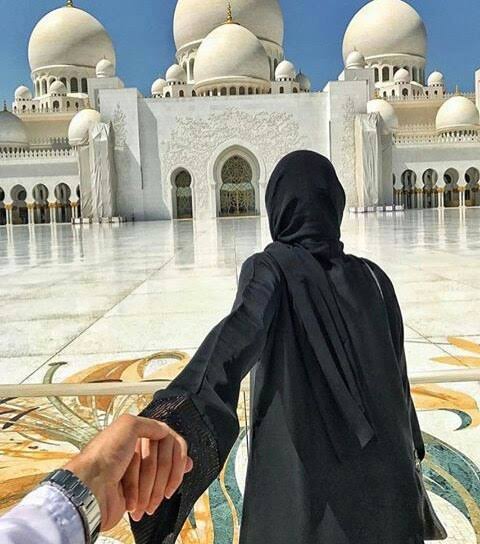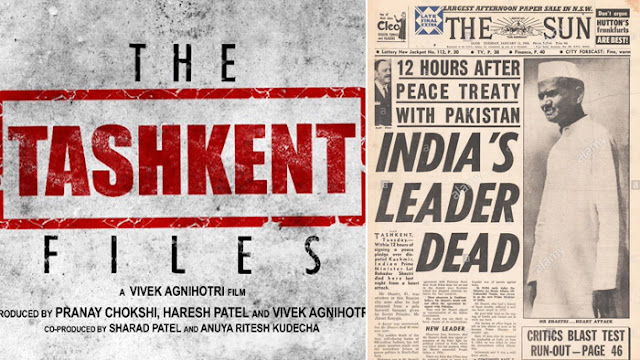Champaner: The pillars where Sarang and Hussena found love
The end of 18th century and heading towards 19th century, kinship hegemony is declining in India. Invasion of britishers and the period of dismantling of monarchy for trade and capital exchange. ‘Shivrajpur’ a small taluka in panchmahal district, Gujarat state of India, where lived a newly married couple Sarang and Hussena, who are about to lead a life sharing an unsettling equation with their respective communities in shivrajpur.
They flee to Champaner, a town 11kms away from shivrajpur, named after the flowers of ‘champaka’ found in the forest of pavagadh. By 15th century, the khichi Chauhan Rajputs held Pavagadh fort above the town of champaner. ‘Muhammed Begda’ in 1484 captured champaner, rebuilding and embellishing it. The town flourished in his reign with the grand establishment of Jama masjid and many other mosques.
It’s been a year, Sarang and Hussena are both living a peaceful life together in champaner with their daily work, embracing each other with love. Hussena in her routine offers prayer in ‘Shehar ki masjid’. The masjid near the royal palace Built by Muhammed Begada of Indo Islamic architecture. It has five mehrabs. The entrance has an arched doorway with a large dome, with smaller domes at four sides and minarets on either side embellished with a projection which is inclined chhajja. The other two openings flanking the central doorway are embellished with jarokhas.
Sarang is a devotee of ‘Mata Kalika’. And makes it once a week to climb up the pavagadh hill to seek her blessings. The temple has three images of goddesses, the central image is of kalika mata, flanked by kali on the right and bahucharamata on the left. The spire of this temple carries a shrine of sadanandsha pir, a muslim saint held in great reverence in the region. The temple has large fortifications and an open chowk in front, with two altars for sacrifices.
Opposite to Sarang and Hussena’s house, lived Shahid chacha a 52 year old man indulged in the profession of wood cutting but popularly known as chacha by the residents of town for his informal sermons on philosophy, love, family. He is impressed from Sarang and Hussena’s relationship and is intrigued to know about them. He has a mini library of books that contain information about champaner, the presence of religious groups and historical instances of diversified elements that co-exist on the land of champaka. He feels Sarang and Hussena’s story is one such instance that should be added to his collection of books. He meets them, talks with them and gives them few books that discuss the great monuments of champaner.
Initially, not so interested in the books, Sarang and Hussena later decide to wander around in champaner and explore. They come across ‘Lakulisa’ temple, the earliest temple on the pavagadh hill is dated to 10th-11th century and is dedicated to Lakulisa (considered to be last avatar of Shiva and founder of pashupata sect in mythology). The temple was built in Nagara style with garbhagriha, mandapa and an entrance porch. It has ornate decorations, mostly stone carvings.
They further visit ‘Jama masjid’. The mosque was constructed in 1513. The two impressive minarets at the entrance of the masjid and the fine blend of Hindu and Islamic architecture are stated to constitute a perfect model of symmetrical composition. The building is double storied. There is a portico which has a large dome built over the podium. The prayer has 11 domes. There are seven mihrabs and the entrance gates are carved and fitted with fine stone jalis. There are approx 200 pillars and it is said that every time one counts the no. of pillars, one finds a different number. The ornamentation of surface areas of tomb consist of symbols of motifs of sun, diamonds, pots and wines and lotus insignia which were used in the early temple. This mosque had three mural plaques with engravings of hymns from the Koran.
The temples of Jainism at pavagadh are also noteworthy. One is the Bhavanaderi temple near the nakkarkhana gate called the ‘Navalakka’ temples. The second is in honor of Tirthankaras ‘Suparshvanatha’ and ‘Chandraprabhu’ and the third on the southeast of pavagadh hill. On the basis of their stylistic and architectural features, the date of construction of these temples is 14th-15th centuries. The temple is made up of pure white stone. Elaborately carved seated and standing images of Jain pantheon is seen on the outer walls of the temple.
Sikander shah’s tomb, the tomb of the last ruler of champaner is a single storey building in muslim architecture. It consists of a central chamber with fluted domes. Sikander shah’s brother latifkhan and nasirkhan were also buried here.
Sarang and Hussena explore the city of champaner and its integrity. But the old city that time was in ruins and wildly overgrown. Later, in 1803 Sarang and Hussena’s life takes a U-turn when the britishers visited champaner. Champaner became a great exporter of silk, with facilities for washing and preparing raw silk. Hussena and Sarang chose to work in the silk industry as that remaining the only option to eke a meager. They worked for seven long years until in 1810 a cholera epidemic was uncontrollable in the town that killed many residents of champaner including Hussena. The epidemic reduced the population to 400 families by 1812; the year in which Sarang dies in the intentional gun firing opened by Patankar, a scindia governor, in order to damage one of the minarets of ‘Jama masjid’.
(The characters and story built is fiction)
They flee to Champaner, a town 11kms away from shivrajpur, named after the flowers of ‘champaka’ found in the forest of pavagadh. By 15th century, the khichi Chauhan Rajputs held Pavagadh fort above the town of champaner. ‘Muhammed Begda’ in 1484 captured champaner, rebuilding and embellishing it. The town flourished in his reign with the grand establishment of Jama masjid and many other mosques.
It’s been a year, Sarang and Hussena are both living a peaceful life together in champaner with their daily work, embracing each other with love. Hussena in her routine offers prayer in ‘Shehar ki masjid’. The masjid near the royal palace Built by Muhammed Begada of Indo Islamic architecture. It has five mehrabs. The entrance has an arched doorway with a large dome, with smaller domes at four sides and minarets on either side embellished with a projection which is inclined chhajja. The other two openings flanking the central doorway are embellished with jarokhas.
Sarang is a devotee of ‘Mata Kalika’. And makes it once a week to climb up the pavagadh hill to seek her blessings. The temple has three images of goddesses, the central image is of kalika mata, flanked by kali on the right and bahucharamata on the left. The spire of this temple carries a shrine of sadanandsha pir, a muslim saint held in great reverence in the region. The temple has large fortifications and an open chowk in front, with two altars for sacrifices.
Opposite to Sarang and Hussena’s house, lived Shahid chacha a 52 year old man indulged in the profession of wood cutting but popularly known as chacha by the residents of town for his informal sermons on philosophy, love, family. He is impressed from Sarang and Hussena’s relationship and is intrigued to know about them. He has a mini library of books that contain information about champaner, the presence of religious groups and historical instances of diversified elements that co-exist on the land of champaka. He feels Sarang and Hussena’s story is one such instance that should be added to his collection of books. He meets them, talks with them and gives them few books that discuss the great monuments of champaner.
Initially, not so interested in the books, Sarang and Hussena later decide to wander around in champaner and explore. They come across ‘Lakulisa’ temple, the earliest temple on the pavagadh hill is dated to 10th-11th century and is dedicated to Lakulisa (considered to be last avatar of Shiva and founder of pashupata sect in mythology). The temple was built in Nagara style with garbhagriha, mandapa and an entrance porch. It has ornate decorations, mostly stone carvings.
They further visit ‘Jama masjid’. The mosque was constructed in 1513. The two impressive minarets at the entrance of the masjid and the fine blend of Hindu and Islamic architecture are stated to constitute a perfect model of symmetrical composition. The building is double storied. There is a portico which has a large dome built over the podium. The prayer has 11 domes. There are seven mihrabs and the entrance gates are carved and fitted with fine stone jalis. There are approx 200 pillars and it is said that every time one counts the no. of pillars, one finds a different number. The ornamentation of surface areas of tomb consist of symbols of motifs of sun, diamonds, pots and wines and lotus insignia which were used in the early temple. This mosque had three mural plaques with engravings of hymns from the Koran.
The temples of Jainism at pavagadh are also noteworthy. One is the Bhavanaderi temple near the nakkarkhana gate called the ‘Navalakka’ temples. The second is in honor of Tirthankaras ‘Suparshvanatha’ and ‘Chandraprabhu’ and the third on the southeast of pavagadh hill. On the basis of their stylistic and architectural features, the date of construction of these temples is 14th-15th centuries. The temple is made up of pure white stone. Elaborately carved seated and standing images of Jain pantheon is seen on the outer walls of the temple.
Sikander shah’s tomb, the tomb of the last ruler of champaner is a single storey building in muslim architecture. It consists of a central chamber with fluted domes. Sikander shah’s brother latifkhan and nasirkhan were also buried here.
Sarang and Hussena explore the city of champaner and its integrity. But the old city that time was in ruins and wildly overgrown. Later, in 1803 Sarang and Hussena’s life takes a U-turn when the britishers visited champaner. Champaner became a great exporter of silk, with facilities for washing and preparing raw silk. Hussena and Sarang chose to work in the silk industry as that remaining the only option to eke a meager. They worked for seven long years until in 1810 a cholera epidemic was uncontrollable in the town that killed many residents of champaner including Hussena. The epidemic reduced the population to 400 families by 1812; the year in which Sarang dies in the intentional gun firing opened by Patankar, a scindia governor, in order to damage one of the minarets of ‘Jama masjid’.
(The characters and story built is fiction)








Comments
Post a Comment